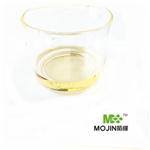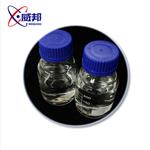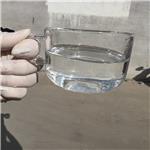Chemical Properties
N-Aminoethypiperazine is a combustible and corrosive aliphatic amine. It is a colorless to light yellow viscous liquid.
Uses
1-(2-Aminoethyl)piperazine is utilized in a variety of reactions for studying corrosion inhibition, biological activity and metal ligand effects on catalysis. It is used for epoxy curing, surface activation, and as an asphalt additive. It is used in lube oil and fuel additives, mineral processing aids, polyamide resins, urethane chemicals, wet strength resins.
Uses
Used for studying corrosion inhibition
Preparation
he synthesis of N-(2-aminoethyl) piperazine from PZ and MEA in the presence of CO2 was conducted using a method similar to that of thermal degradation experiments. 7 m PZ/2 m MEA with 0.3 mol CO2 /mol alkalinity was placed in ?-inch OD 316 stainless steel thermal cylinders , which were then sealed and placed in a convection oven held at 150 °C. Cylinders were removed periodically and samples were analyzed using ion chromatography.
Definition
An amine combining a primary, secondary, and ter-
tiary amine in one molecule.
General Description
N-aminoethylpiperazine appears as a colorless liquid with a faint fishlike odor. Flash point 199 °F. Corrosive to tissue. Toxic oxides of nitrogen are produced by combustion.
Air & Water Reactions
Water soluble.
Reactivity Profile
N-Aminoethylpiperazine neutralizes acids to form salts plus water in exothermic reactions. May be incompatible with isocyanates, halogenated organics, peroxides, phenols (acidic), epoxides, anhydrides, and acid halides. Flammable gaseous hydrogen is generated in combination with strong reducing agents, such as hydrides.
Hazard
Strong irritant to tissue.
Health Hazard
INHALATION: Burning sensation, coughing, wheezing, laryngitis, shortness of breath, headache, nausea, and vomiting. EYES AND SKIN: Extremely destructive to mucous membranes, upper respiratory tract, eyes and skin. Causes burns on short contact.
Fire Hazard
Special Hazards of Combustion Products: Toxic fumes of NO x
Safety Profile
Poison by intraperitoneal route. Moderately toxic by ingestion and skin contact. Experimental reproductive effects. A skin and eye irritant. Mutation data reported. See also AMINES. Moderately flammable when exposed to heat, flame, sparks, or powerful oxidlzers. To fight fire, use alcohol foam. When heated to decomposition it emits toxic fumes of NOx,.
Potential Exposure
Used as an epoxy curing agent and making pharmaceuticals; synthetic fibers, and other chemicals.
Shipping
UN2815 N-Aminoethylpiperazined, Hazard class: 8; Labels: 8-Corrosive material
Incompatibilities
Solution is a strong base. Reacts with nitrosating agents (e.g., nitrites, nitrous gases, nitrous acid); capable of releasing carcinogenic nitrosamines. Incompatible with nonoxidizing mineral acids; strong acids; organic acids, acid chlorides; acid anhydrides; organic anhydrides; isocyanates, chloroformates, vinyl acetate; acrylates, substituted allyls; alkylene oxides; epichlorohydrin, ketones, aldehydes, alcohols, glycols, phenols, cresols, caprolactum solution; strong oxidizers. Contact with copper alloys, zinc or galvanized steel may cause violent reaction.
Toxics Screening Level
The initial threshold screening level (ITSL) for aminoethylpiperazine is 0.1 μg/m3 based on an annual averaging time.
References
[1] YANG DU. Aqueous Piperazine/N-(2-Aminoethyl) Piperazine for CO2 Capture☆[J]. Energy Procedia, 2013, 29 1: 1621-1638. DOI:10.1016/J.EGYPRO.2013.06.038.
[2] SHI L, WANG T Y, CHEN M J, et al. Synthesis of Aminoethylpiperazine/Formaldehyde Modified Lignin Amine Asphalt Emulsifier and Its Investigation by Online FTIR Spectrophotometry[C]. 2016: 0. DOI:10.2991/ICMSE-16.2016.23.
[3] XIAOHUI HAN . Synthesis, crystal structure, and optical property of a one-dimensional selenidostannate: [AEPPH2]2[Sn5Se12] (AEPP=N-aminoethylpiperazine)[J]. Inorganic Chemistry Communications, 2016, 63: Pages 42-47. DOI:10.1016/j.inoche.2015.11.009.





